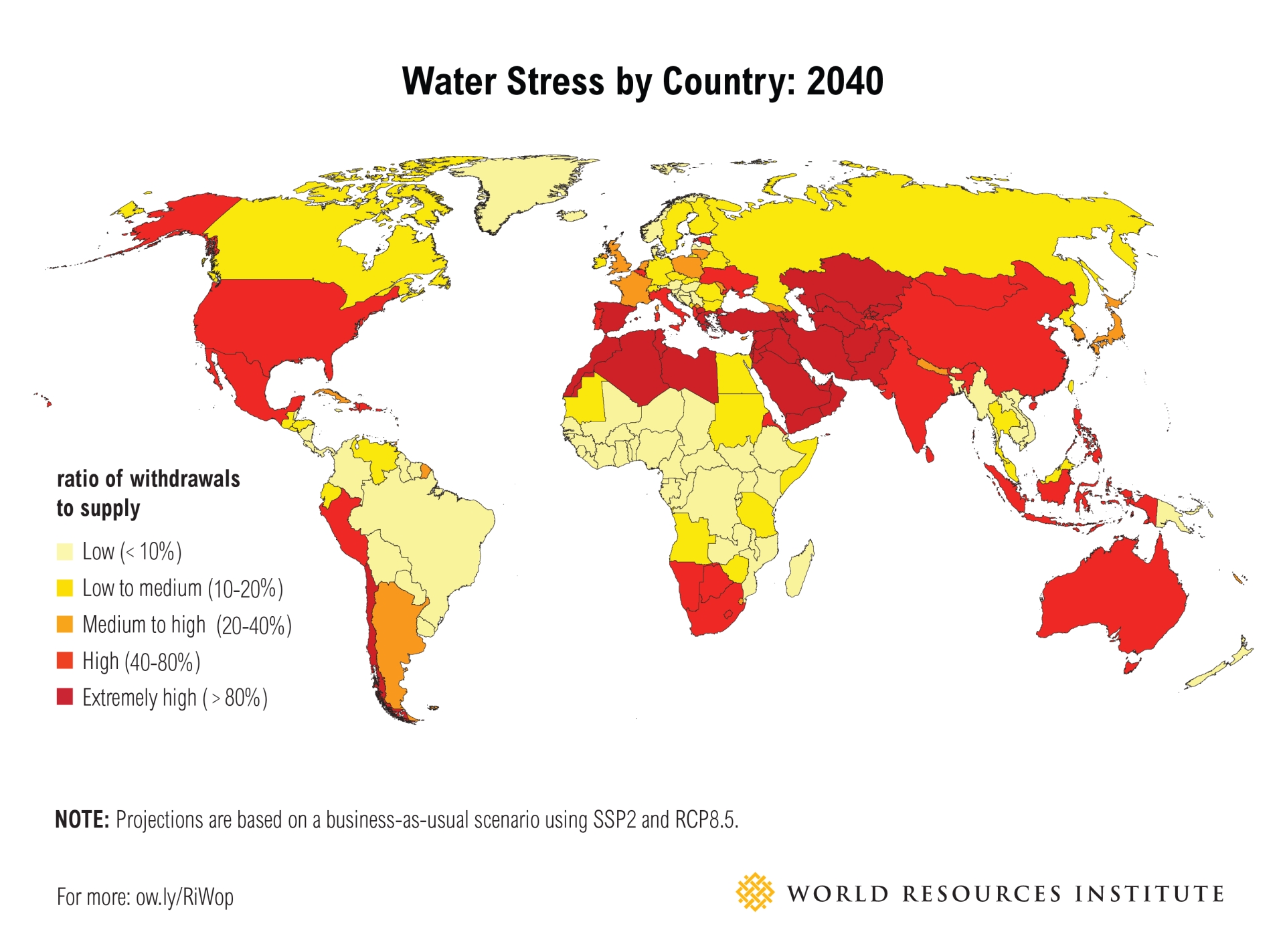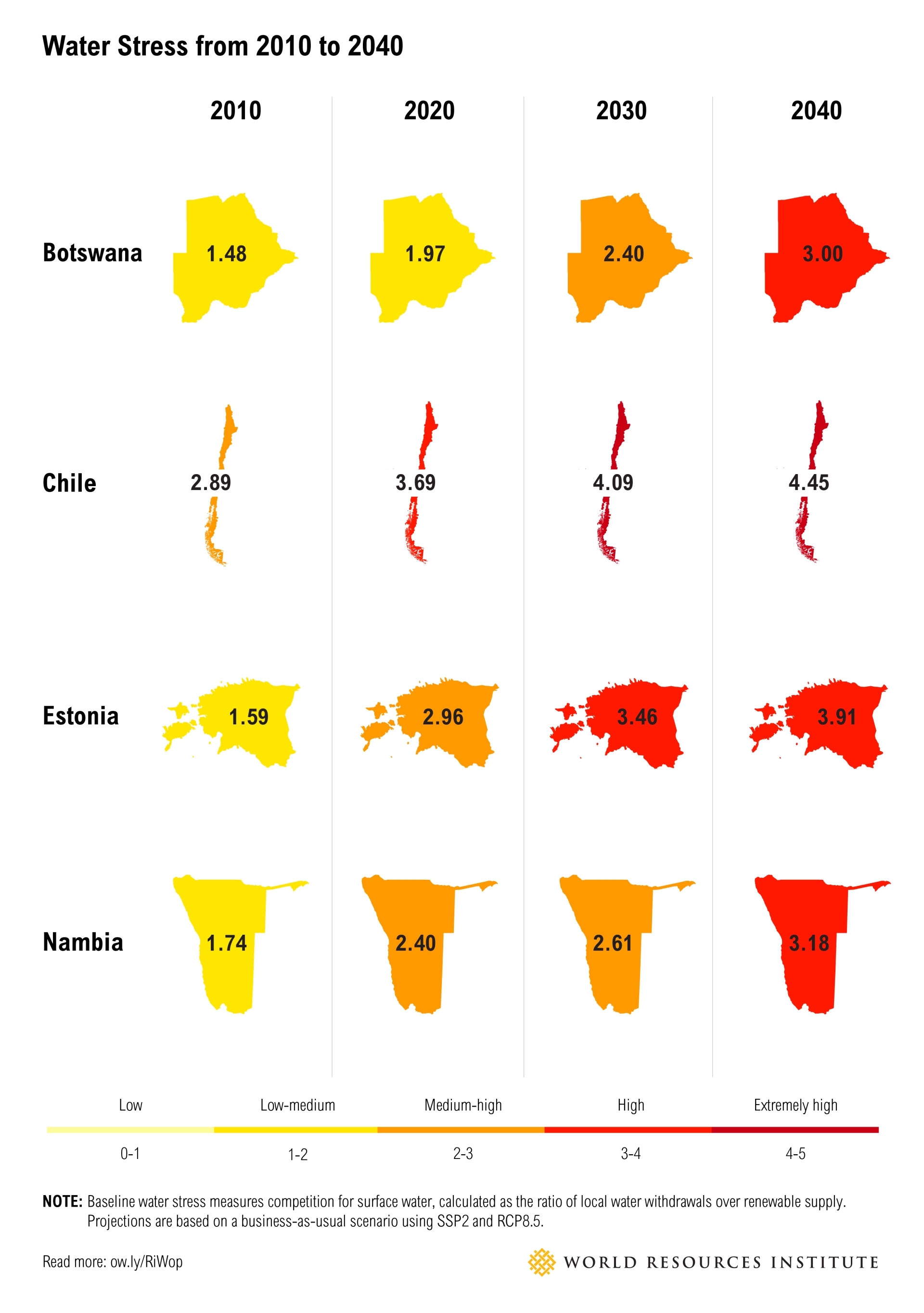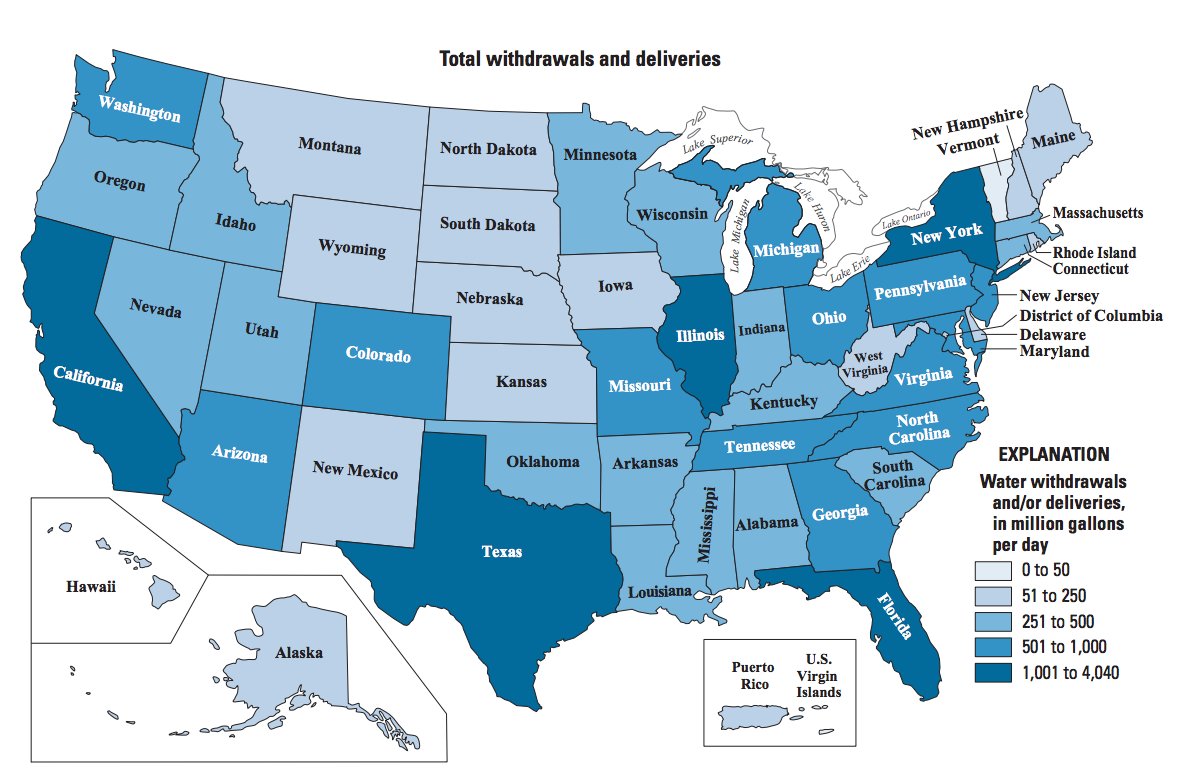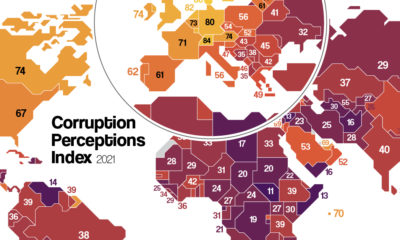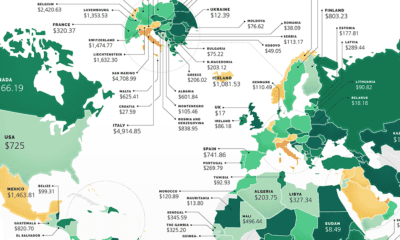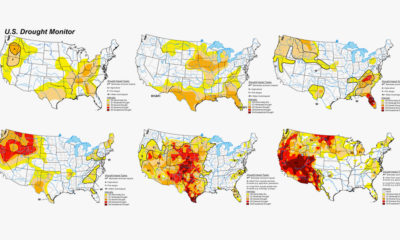Based on recent data from the World Resources Institute, here are the countries that are expected to get hit the hardest by water shortages in the coming decades:
The report notes that more people continue to move to cities and that this can put stress on the established water supply. Combine this with growing population and consumption, and some regions will struggle more than others to replenish water when it is needed. Circumstances are also exacerbated by changing climates: some areas that are wet are becoming drier, and vice versa. A total of 167 countries were examined for “water stress” which is considered by the report as a combination of depletion and competition for surface water. Of the nations examined, there are 33 countries that are expected to have extremely high water stress by 2040. Here’s some that will feel it the most:
In particular, life will not get any easier in the Middle East: 14 of the 33 countries with extremely high water stress are in the region. Nine of those countries scored a five out of five for water stress: Bahrain, Kuwait, Palestine, Qatar, United Arab Emirates, Israel, Saudi Arabia, Oman and Lebanon. The Middle East relies heavily on groundwater and desalinated sea water, and such ongoing water challenges could amplify volatility in the area. The largest economies in the world, such as the United States, China and India, will also face stress in particular regions. For example, WRI notes that the southwestern United States and China’s Ningxia province could see water stress levels rise 40% to 70%. Here’s a previous map we have shown that covers water withdrawals and deliveries in the United States:
on Over recent decades, farmers have been able to more than double their production of crops thanks to fertilizers and the vital nutrients they contain. When crops are harvested, the essential nutrients are taken away with them to the dining table, resulting in the depletion of these nutrients in the soil. To replenish these nutrients, fertilizers are needed, and the cycle continues. The above infographic by Brazil Potash shows the role that each macronutrient plays in growing healthy, high-yielding crops.
Food for Growth
Nitrogen, phosphorus, and potassium (NPK) are three primary macronutrients that are the building blocks of the global fertilizer industry. Each plays a key role in plant nutrition and promoting crop growth with higher yields. Let’s take a look at how each macronutrient affects plant growth. If crops lack NPK macronutrients, they become vulnerable to various stresses caused by weather conditions, pests, and diseases. Therefore, it is crucial to maintain a balance of all three macronutrients for the production of healthy, high-yielding crops.
The Importance of Fertilizers
Humans identified the importance of using fertilizers, such as manure, to nourish crops dating back to nearly 6,000 to 2,400 BC. As agriculture became more intensive and large-scale, farmers began to experiment with different types of fertilizers. Today advanced chemical fertilizers are used across the globe to enhance global crop production. There are a myriad of factors that affect soil type, and so the farmable land must have a healthy balance of all three macronutrients to support high-yielding, healthy crops. Consequently, arable land around the world varies in the amount and type of fertilizer it needs. Fertilizers play an integral role in strengthening food security, and a supply of locally available fertilizer is needed in supporting global food systems in an ever-growing world. Brazil is one of the largest exporters of agricultural goods in the world. However, the country is vulnerable as it relies on importing more than 95% of its potash to support crop growth. Brazil Potash is developing a new potash project in Brazil to ensure a stable domestic source of this nutrient-rich fertilizer critical for global food security. Click here to learn more about fertilizer and food production in Brazil.
